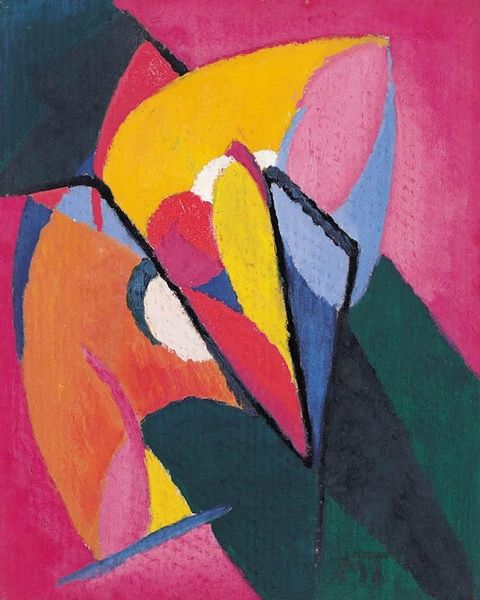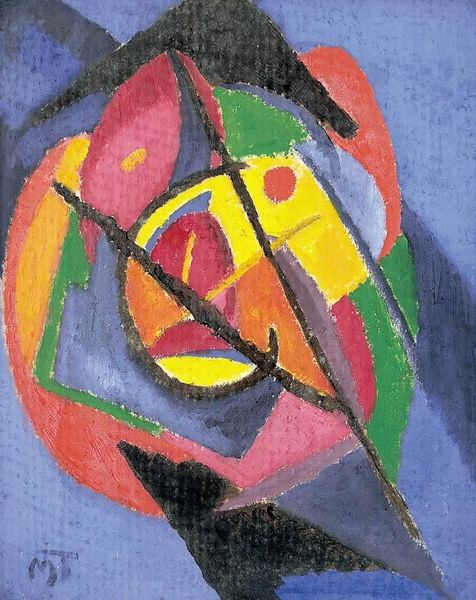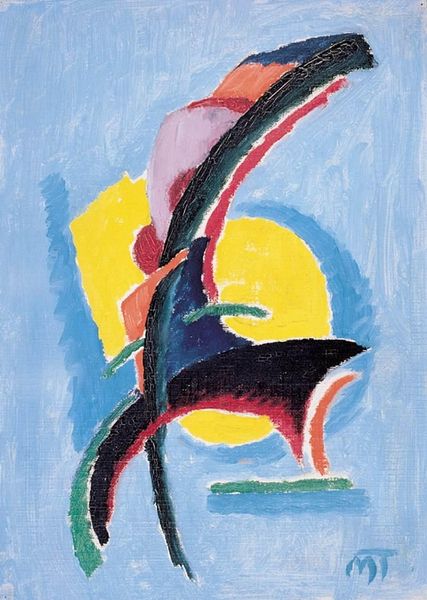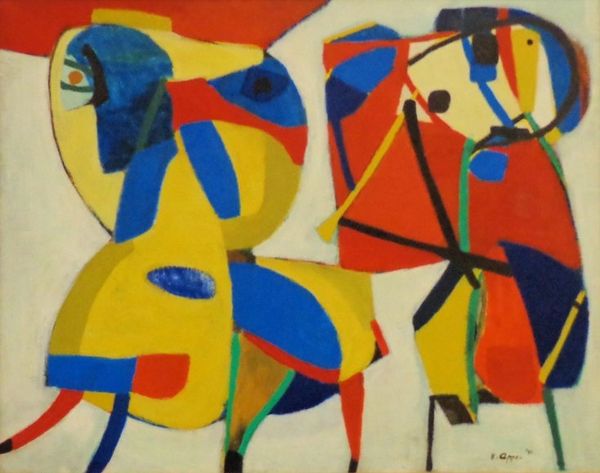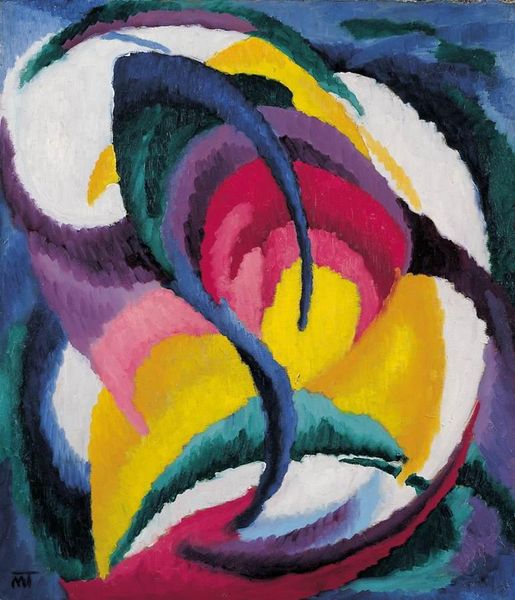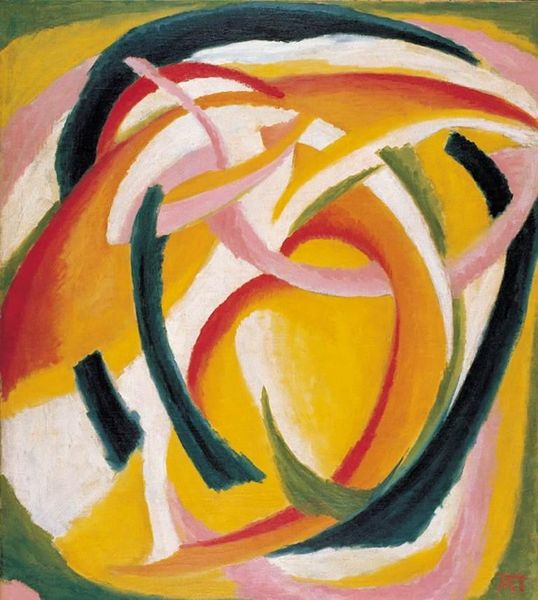
painting, acrylic-paint
#
acrylic
#
painting
#
constructivism
#
acrylic-paint
#
painted
#
acrylic on canvas
#
geometric
#
expressionism
#
abstraction
#
modernism
Copyright: Public domain US
Janos Mattis-Teutsch created this "Composition" with oil paints, a medium with a fascinating history. Unlike fresco or tempera, oil paint allowed for extended working time; think of the layered glazes of the Renaissance masters. Here, though, the oil paint is applied in flat planes of color, a modern approach. You can see how the material's fluidity enables the blending of tones, yet Mattis-Teutsch controls it, creating clear boundaries. This wasn't about illusionism, but rather an expressive arrangement of forms. Oil paint, commercially available by the 19th century, democratized art making. But it also fueled the art market, where works like this one became commodities. The very act of painting, the labor, the material – all contribute to the work's meaning. By appreciating these factors, we move beyond simple aesthetics to understand the broader cultural significance of the “Composition.”
Comments
No comments
Be the first to comment and join the conversation on the ultimate creative platform.

